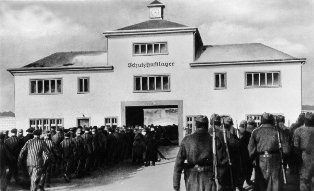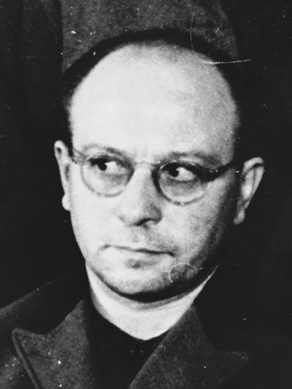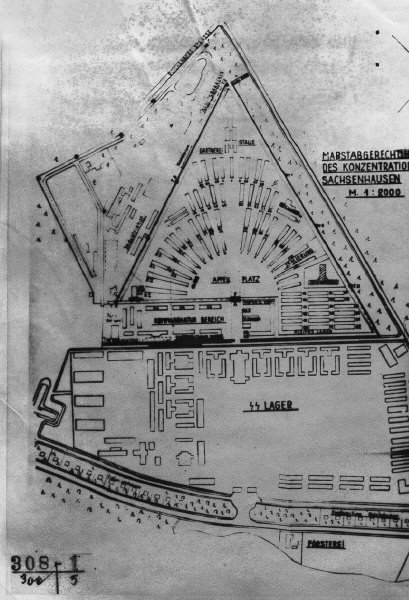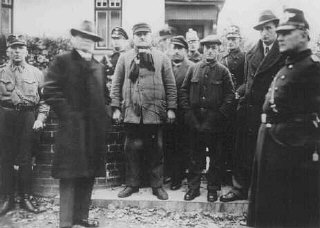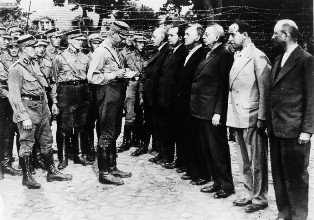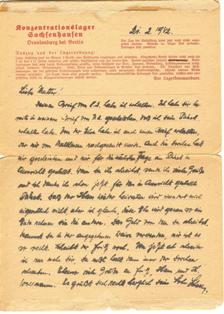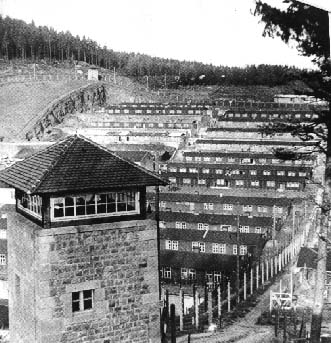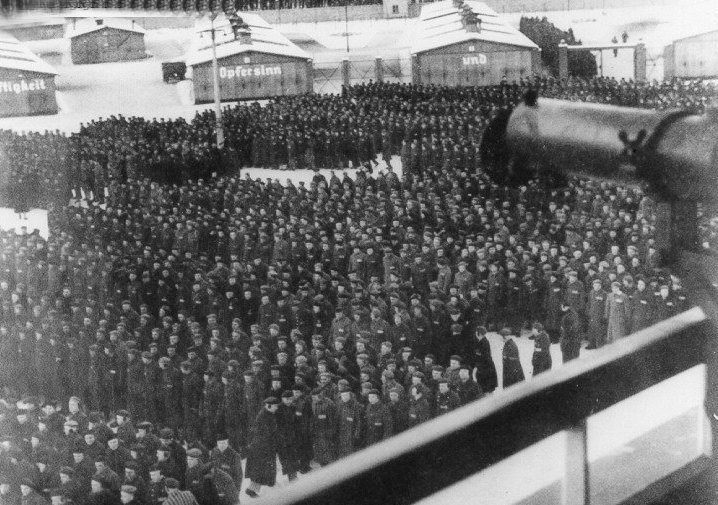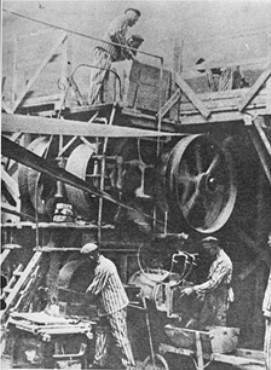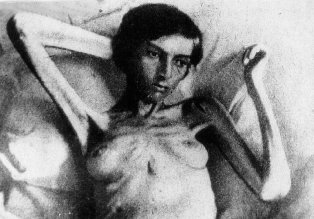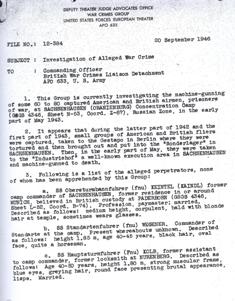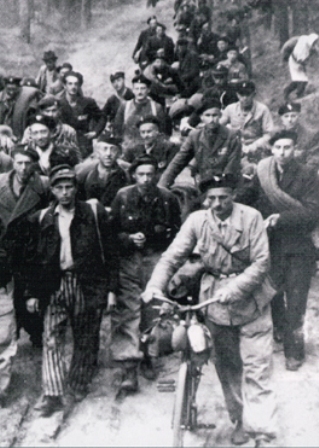Holocaust Education & Archive Research Team |
|
Other Camps
Key Nazi personalities in the Camp System The Labor & Extermination Camps
Auschwitz/Birkenau Jasenovac Klooga Majdanek Plaszow The Labor Camps
Trawniki
Concentration Camps
Transit Camps
| |||||||
Sachsenhausen "Oranienburg"
Concentration Camp
The Sachsenhausen Concentration Camp was built in the summer of 1936 by concentration camp prisoners from the Emsland camps. Just north of Berlin, Sachsenhausen was one of the most notorious death camps of the Nazi empire and was liberated by Allied troops in 1945.
The camp is sometimes referred to as Sachsenhausen-Oranienburg. The name "Sachsen Hausen" means "Saxon's Houses" when translated to English.
The camp was located at the edge of Berlin, which gave it a position among the German concentration camps: the administrative centre of all concentration camps was located in Oranienburg, and Sachsenhausen became a training centre for SS officers (who would often be sent to oversee other camps afterwards).
The camp was commanded by a number of notable SS officers, some who later commanded Auschwitz and Majdanek in Poland, and some who were some of the most brutal and infamous killers, such as Kramer, Palitzsch, Schwarzhuber who were at Auschwitz, Suhren at Ravensbruck and Graetschus and Niemann who both served at both Belzec and Sobibor death camps:
Other notable SS men who also served at Sachsenhausen and other camps were:
Sachsenhausen concentration camp was built in the form of an equilateral triangle with its buildings grouped symmetrically around an axis. It was here that 'Tower A', the SS camp administration, was centrally housed. A semicircular roll-call area was located directly in front of this and was closed in by four barracks.
The SS had their barracks on a continuation of the middle axis which followed the camp street, passed 'Tower A' and accentuated both the axis and the symmetry of the camp.
During the founding phases of the camp the vast majority of prisoners held were political opponents of the National Socialist regime.
After 1938 the camp was used far more as an instrument of the racist National Socialist population and social policies, that were directed against the Jews, Sinti, Roma, homosexuals, the so called 'asocial', 'work shy' and 'professional criminals' as well as other groups.
During the nationwide Kristallnacht ("Night of Broken Glass") pogrom of November 1938, SS chief Heinrich Himmler ordered the summary arrest of about 30,000 Jews and their incarceration in three concentration camps: Sachsenhausen, Dachau, and Buchenwald. Almost 6,000 Jews were deported to Sachsenhausen in the aftermath of the pogrom.
One of the Berlin Jews who was deported to Sachenhausen was Sigmund Weltlinger:
“They were very friendly gentlemen who said, “You are a Front Soldier, nothing much will happen to you. Perhaps you will be home again by this evening, but just in case take the most necessary things with you, your shaving things, washing things, whatever you need.”
So I went with them and believed it too. But when I came to Sachsenhausen – Orainienburg camp outside Berlin I was immediately taught different. We were all shoved together with clubs and blows and had to stand in even ranks to be counted.
Because I had been a soldier I didn’t find that all very difficult but the others who didn’t fall in quickly were beaten immediately. The most terrible thing was when somebody grabbed hold of a big strong man and he said “Don’t grab me.” The guard said “What I should not grab you?” and he gave him a blow and this man was immediately overpowered by three SS people.
A block was brought and he was bound fast to it, and the camp commandant said he was sentenced to twenty-five lashes. Then a giant man came, an SS man with a huge ox-whip and started to beat him. At first the man only groaned a bit but then he begged them to stop.
The commandant said, “What do you mean, stop?” We’ll start all over again from the beginning.” But after three more lashes the blood was spurting already and salt was rubbed in the wounds, or pepper – I don’t know any more. The man was dragged away, unconscious or dead. We never saw him again.”
Beginning in 1939 the populations of the occupied countries, foreign forced laborers and allied prisoners of war were also imprisoned in Sachsenhausen and by 1944 ninety percent of the prisoners were foreigners, the majority from the Soviet Union and Poland.
It is estimated that more than 200,000 people were imprisoned in the Sachsenhausen Concentration Camp between 1936 and 1945. At first the prisoners were mostly political opponents of the Nazi regime. However, increasing numbers of members of groups defined by the National Socialists as racially or biologically inferior were later included.
By 1939 large numbers of citizens from the occupied European states arrived. Tens of thousands of people died of starvation, disease, forced labor and mistreatment, or were victims of the systematic extermination operations of the SS. Thousands of other prisoners died during the death marches following the evacuation of the camp at the end of April 1945.
Among the notable prisoners including members of the “Old Guard” of the Nazi party, such as Dr Martin Luther, the former Austrian chancellor Dr Kurt Schuschnigg, Dr Niemoller, George Elser who supposedly made and placed the bomb in the Munich beer cellar, aiming to assassinate Hitler. Both of the prisoners were transferred from Sachsenhausen to Dachau concentration camp.
Carl von Ossietzky the 1935 Nobel Peace Prize winner was detained in Sachenhausen as well as other high-ranking General Staff officers, who lived outside the prisoner compounds in isolated special barracks or small houses.
The first group of Soviet prisoners of war sent to Sachsenhausen arrived at the camp at the end of August 1941. By mid-November 1941, the SS deported about 18,000 Soviet prisoners of war to the Sachsenhausen concentration camp. In all, more than 13,000 Soviet prisoners of war were shot at Sachsenhausen.
As of mid-January 1945 there were more than 65,000 prisoners in Sachsenhausen, including more than 13,000 women. During the war, forced labor utilizing concentration camp prisoners became increasingly important in German armaments production.
As a result, the Sachsenhausen camp system expanded to include more than 30 sub-camps concentrated mainly around armaments industries in the greater Berlin area in northern Germany. Prisoners in the Sachsenhausen camp were also subjected to medical experiments.
The main sub-camps were:
The prisoners worked not only in the SS's own workshops and small companies situated in the industry yard next to the camp, but also in various punishment units such as the 'shoe walking unit'.
Here the prisoners were forced to spend their entire day, walking along the shoe-testing tracks, testing shoes for local shoe manufactures. The tracks were built by a research institute with nine types of surfaces.
Each day guards forced prisoners to wear new shoes and march about 40 kilometres over a track of cement, cinders, broken stones, gravel and sand. In 1944 the SS devised a special torture – they made prisoners walk in shoes one or two sizes too small while carrying sacks filled with 20 kilograms of sand.
Another feared unit was that of the brickworks, built in 1938 by prisoners under huge sacrifice, the brickworks had its own harbor on the Lehnitz-Schleuse. It was here that materials were to be produced for Albert Speer's construction plans in Berlin.
Prisoners in the Sachsehausen were also subjected to medical experiments Dr Werner Fischer performed experiments on Gypsies in an attempt to show they had different blood from Germans.
When the Gypsies died, he widened the circle to include Jews. In another experiment projectiles containing aconitum nitrate were shot into the thigh of an inmate so that Dr Mugowsky could prove that after such a procedure death would occur in two hours.
In 1942 Sachsenhausen had more than 100 major & minor sub-camps and prisoner units attached to it, this was mainly due to the massive use of forced labor in concentration camps for the armaments industry and many of the sub-camps were situated near to weapons factories such as the one near the Heinkel airplane factory in Oranienburg or in the industrial centers of Siemens and AEG in Berlin.
Sachsenhausen was also the site of the largest counterfeiting operation ever. The Nazis forced Jewish artisans to produce forged American and British currency. Over one billion pounds in fake cash was recovered.
This project was led by SS- Sturmbannfuhrer Bernhard Krueger who selected 140 Jewish craftsmen to produce the forged notes, the Nazis used this money to pay their foreign spies, but they were unable to send the money to England, and they ran out of time and the plates and forgers were sent to Mauthausen.
Many women were among the inmates of Sachsenhausen and its sub-camps. According to SS files, more than 2,000 women lived in Sachsenhausen, guarded by female SS staff (Aufseherin).
Camp records show that there was one male SS soldier for every ten inmates and for every ten male SS there was a woman SS.
Several sub-camps for women were established in Berlin, including in Neukolln. On January 31st, 1942, the SS forced a team of inmates to build the so-called "Station Z". This new installation was built for the extermination of the prisoners.
On May 29th, 1942, the SS invited dozen of high ranked Nazi official for the inauguration of the new installation. In order to show them how the new installation was efficient, 96 Jews were killed by shooting. In March 1943, a gas chamber was added to the "Station Z".
This gas chamber was used until the end of the war. The number of gassed victims is unknown because the transports for gassings were not registered in the entry registers of the camp.
At the end of 1942 and early 1943 captured British and American airmen were sent to Sachsenhausen where many were tortured by the Gestapo, forced to endure long periods in the Sonderlager and subsequently summarily executed by machine gun fire in the "Industriehof" section of the camp.
Former camp commandant Anton Kaindl, several other SS leaders at Sachsenhausen were later tried for these acts by the major war crimes tribunal in Berlin.
Shortly before liberation in 1945, there was an April death march; prisoners numbered as many as 40,000. Thousands died of exhaustion, starvation, & shootings.
On the way to northwest Germany, a 'Forest camp' was established at Belower Forest, where a museum was raised in remembrance: 16,000 stayed there until 4-29-04.
The 47th Soviet Army division, and the "Polish 2nd Infantry Division of Ludowe Wojsko Polskie", liberated Oranienburg and Sachsenhausen, encountering thousands of death march victims en route.
Jewish deaths are estimated at 105,000 total, a remarkable number comprising most of the Jews left in Germany. Six mass graves were found at the walls of the main camp.
Sources: Sachsenhausen. Dokumente, Aussagen, Forschungsergebnisse und Erlebnisse über das ehemalige Konzentrationslager Sachsenhausen. VEB Deutscher Verlag der Wissenschaften, Berlin 1986 Holocaust Historical Society The Camp Men by French L MacLean published by Schiffer Military History Atglen PA 1999 The World at War by Richard Holmes published by Ebury Press 2007 Hitler’s Death Camps by Konnilyn Feig, published by Holmes and Meier Publishers New York and London 1979 NARA USHMM Archives
Copyright: Carmelo Lisciotto & Chris Webb H.E.A.R.T 2008
|
